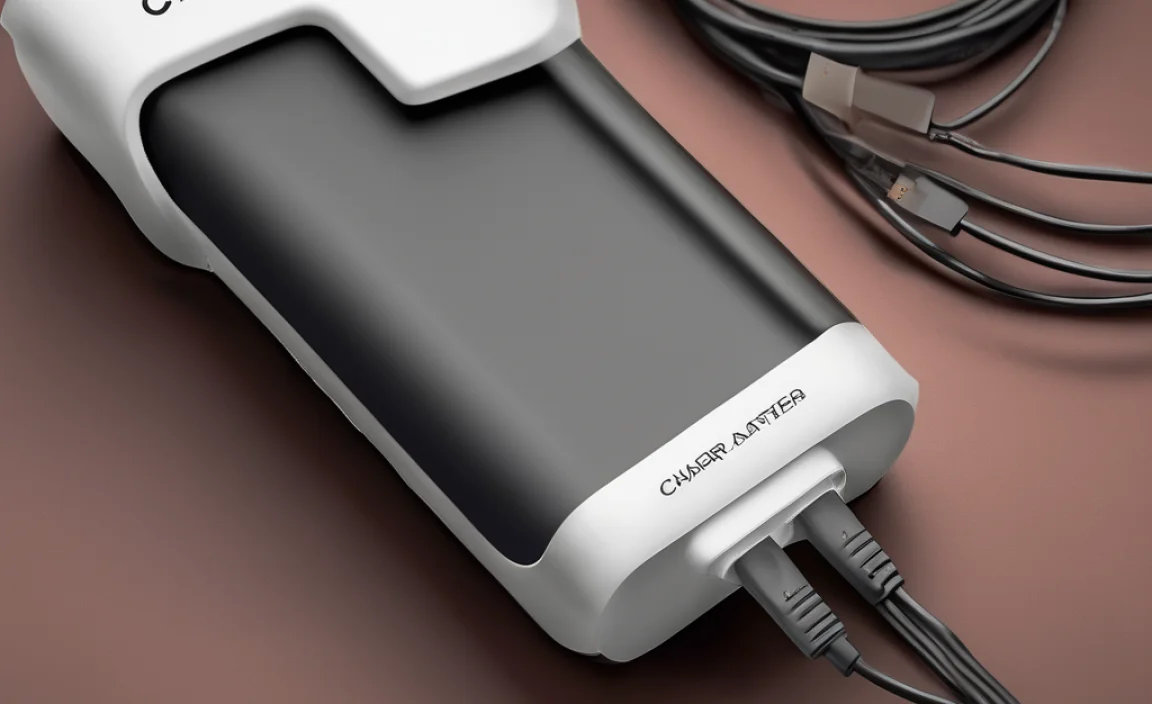Charger for AA batteries offers an environmentally friendly and cost-effective solution for powering everyday electronic devices, reducing waste and saving money over time. With the rise of rechargeable technologies, understanding how to effectively use AA battery chargers is essential for maximizing battery life and performance.
AA battery chargers are essential tools for anyone looking to make the switch from disposable to rechargeable batteries. These chargers provide a sustainable, cost-effective solution for powering a wide range of devices, from remote controls to digital cameras. As technology advances, rechargeable batteries have become more efficient, making them an attractive choice for environmentally conscious consumers. This article explores the importance of AA battery chargers, their benefits, and practical tips for their use, ensuring you get the most out of your rechargeable batteries.
Key Takeaways
- Cost Savings: Rechargeable batteries can be reused hundreds of times, lowering long-term costs.
- Environmental Impact: Reduces waste compared to disposable batteries, benefiting the planet.
- Improved Performance: Modern chargers enhance battery longevity and efficiency.
- Versatility: Suitable for a wide range of devices requiring AA batteries.
- Convenience: Eliminates frequent trips to purchase new batteries.
- Technology Advancements: Newer chargers offer quicker charging and smart features.
- Availability: Widely available and easy to use for all consumers.
What is a Charger for Double A Batteries?

A charger for AA batteries is a device designed to restore energy to rechargeable AA batteries, allowing them to be reused multiple times. These chargers are pivotal in minimizing electronic waste and reducing the frequency of purchasing new disposable batteries. As rechargeable technology has advanced, these chargers have become more efficient and user-friendly, offering a sustainable solution for powering electronic devices.
Understanding AA Battery Chargers
- Basic Functionality: Converts AC electricity from outlets into DC electricity suitable for charging batteries.
- Types: Includes smart chargers with safety features and basic models.
- Compatibility: Mainly used for Nickel-Metal Hydride (NiMH) and Nickel-Cadmium (NiCd) rechargeable batteries.
- Charging Time: Varies from 30 minutes to several hours depending on the charger model.
- Indicators: Most chargers include LED indicators to show charging status.
These chargers are integral to the functioning of any rechargeable battery system, offering a means to efficiently restore battery life and thereby extend the usability of the batteries.
Why is a Charger for Double A Batteries Important?
The importance of AA battery chargers cannot be overstated. They provide a means to reduce reliance on disposable batteries, thereby contributing to environmental conservation. Additionally, the long-term cost savings of using rechargeable batteries make them attractive for frequent battery users.
Benefits of Using AA Battery Chargers
- Environmental Benefits: Reduces the environmental impact by decreasing battery waste.
- Cost Efficiency: Although the initial cost is higher, the long-term savings are significant.
- Energy Efficiency: Modern chargers are designed to minimize energy consumption.
- Reliability: Provides consistent power supply without the need for frequent replacements.
- Safety Features: Advanced chargers come with overcharge protection and temperature control.
The use of AA battery chargers not only supports sustainable practices but also ensures reliability and efficiency in powering devices.
Step-by-Step Guide to Using a Charger for Double A Batteries
Effective use of an AA battery charger is straightforward but requires attention to detail to maximize battery life and functionality.
Step 1: Selecting the Right Charger
- Compatibility: Ensure the charger is compatible with the battery type (NiMH or NiCd).
- Features: Look for smart chargers that offer quick charging and safety features.
- Brand: Choose reputable brands for better reliability and warranty.
Selecting the appropriate charger is crucial for achieving the best performance and longevity from your batteries.
Step 2: Inserting the Batteries
- Correct Orientation: Insert batteries with the correct polarity (+/-).
- Secure Fit: Ensure batteries are snugly fitted into the charger slots.
Proper insertion of batteries prevents damage and ensures efficient charging cycles.
Step 3: Charging Process
- Plug in the Charger: Connect the charger to a power outlet.
- Monitor Indicators: Use LED indicators to check charging status.
- Complete Charging: Wait until the indicator shows a full charge.
Monitoring the charging process ensures that batteries are fully charged and prevents overcharging.
Step 4: Removing the Batteries
- Unplug Safely: Disconnect the charger from the outlet before removing batteries.
- Storage: Store fully charged batteries in a cool, dry place.
Proper removal and storage of batteries help maintain their charge and prolong their life.
Alternative Methods / Tools
While AA battery chargers are the primary method for recharging, there are alternative approaches and tools available for specific needs.
Solar Chargers
- Eco-Friendly: Utilizes solar energy to charge batteries.
- Portability: Ideal for outdoor use or travel.
- Independence: Reduces reliance on electrical outlets.
Solar chargers offer a sustainable alternative, especially beneficial for those who require power on the go.
USB Chargers
- Convenience: Can be powered by USB ports on computers or power banks.
- Versatility: Suitable for various battery sizes with adapters.
USB chargers provide an adaptable solution, particularly useful in situations where traditional outlets are inaccessible.
Troubleshooting Common Issues
Despite their convenience, users may encounter issues when charging AA batteries. Here are some common problems and their solutions.
Charger Not Recognizing Batteries
- Check Polarity: Ensure batteries are inserted correctly.
- Clean Contacts: Wipe battery and charger contacts to remove dust or corrosion.
If the charger fails to recognize batteries, checking polarity and cleaning contacts typically resolves the issue.
Batteries Not Holding Charge
- Battery Age: Replace old batteries that no longer hold a charge.
- Complete Charging Cycles: Ensure batteries are fully charged and discharged.
For batteries that don’t hold a charge, replacing them or cycling them through complete charges can improve performance.
Advanced Techniques
For those looking to optimize their battery charging experience further, exploring advanced techniques can be beneficial.
Battery Conditioning
- Cycling: Regularly discharge and recharge batteries to maintain capacity.
- Use of Chargers with Conditioning Mode: Utilize chargers that offer a refresh function.
Battery conditioning helps maintain battery health and capacity, especially for older batteries.
Optimization of Charging Environment
- Temperature Control: Charge batteries in a stable temperature environment.
- Avoid Overcharging: Use smart chargers with auto-shutoff features.
Optimizing the charging environment can significantly extend the lifespan and efficiency of AA batteries.
Prevention & Maintenance Tips
Proper maintenance and preventative measures are crucial for ensuring the longevity of AA batteries and their chargers.
Regular Checks
- Inspect Chargers and Batteries: Regularly check for signs of wear or damage.
- Test Battery Performance: Use a multimeter to check battery voltage periodically.
By performing regular checks, you can catch potential issues early and ensure continued performance.
Storage Practices
- Cool, Dry Place: Store batteries in optimal conditions to prevent degradation.
- Avoid Metal Contact: Keep batteries away from metal objects to prevent short circuits.
Proper storage practices are vital in maintaining the performance and lifespan of rechargeable AA batteries.
According to EnergySage 2024, the use of rechargeable batteries can reduce battery waste by up to 50% compared to disposable batteries.
According to Consumer Reports 2024, households can save an average of $100 annually by switching to rechargeable batteries.
According to Battery University 2025, a quality AA battery charger can extend the life of rechargeable batteries by up to 30%.
Comparison of AA Battery Chargers
| Method | Difficulty | Speed | Best For | Notes |
|---|---|---|---|---|
| Standard Charger | Easy | Medium | General Use | Affordable, widely available |
| Smart Charger | Moderate | Fast | Frequent Users | Includes safety features |
| Solar Charger | Moderate | Slow | Eco-conscious Consumers | Depends on sunlight availability |
| USB Charger | Easy | Variable | Travelers | Portable, versatile |
Conclusion
The use of a charger for AA batteries is a practical step towards sustainable energy consumption. By understanding how to choose and use these chargers effectively, you can maximize battery performance and lifespan. Embracing rechargeable technology not only saves money but also supports environmental conservation. Take the initiative today to invest in quality AA battery chargers and enjoy the benefits of a more efficient power solution.
Frequently Asked Questions
Question 1: What Types of Batteries Can Be Charged with AA Chargers?
Answer: **NiMH and NiCd rechargeable AA batteries** are typically supported.
Question 2: How Long Does It Take to Charge AA Batteries?
Answer: **Charging time varies from 30 minutes to 8 hours depending on the charger.**
Question 3: Can I Use Different Brands of Batteries with My Charger?
Answer: **Yes, but ensure they are compatible (NiMH or NiCd) and quality brands for best results.**
Question 4: Are Solar Chargers Effective for AA Batteries?
Answer: **Yes, solar chargers can effectively charge AA batteries, especially in sunny conditions.**
Question 5: How Do I Know When My Batteries Are Fully Charged?
Answer: **Most chargers have LED indicators that show when batteries are fully charged.**
Question 6: Is It Safe to Leave Batteries in the Charger Overnight?
Answer: **It is not recommended unless the charger has an auto-shutoff feature.**
Question 7: What Should I Do if My Charger Doesn’t Recognize a Battery?
Answer: **Check the battery orientation and clean the contacts.**
Question 8: How Can I Extend the Life of My Batteries?
Answer: **Regularly cycle them through full charges and discharges and store them properly.**
Question 9: Are USB Chargers as Effective as Standard Chargers?
Answer: **USB chargers are effective but can be slower and may provide variable charging speeds.**


